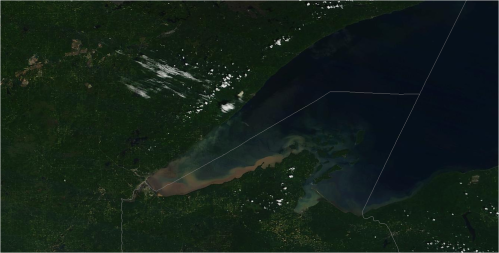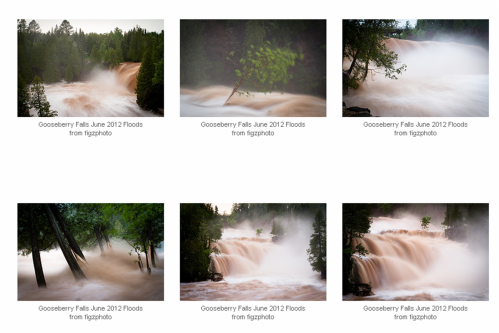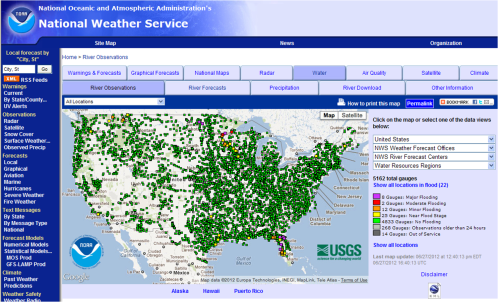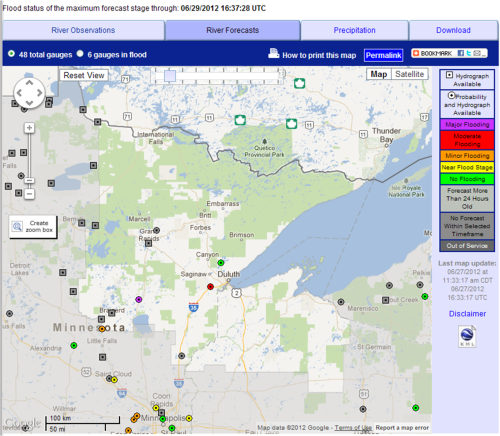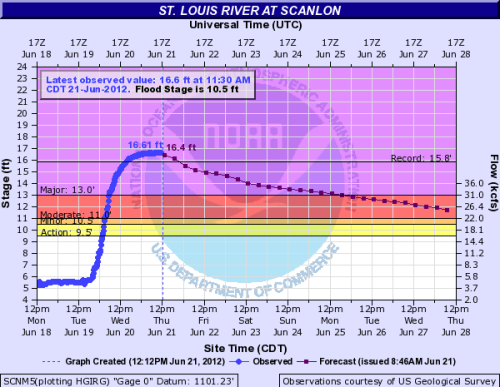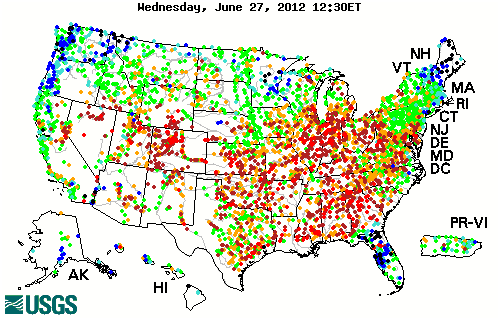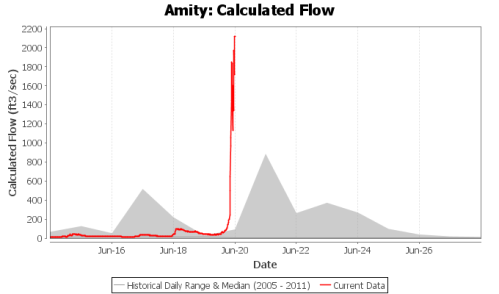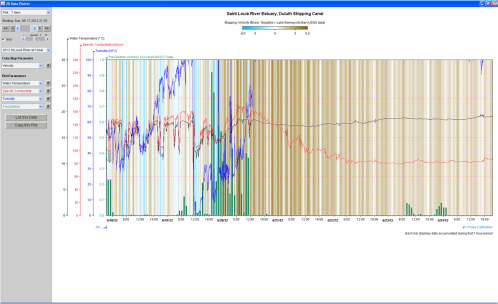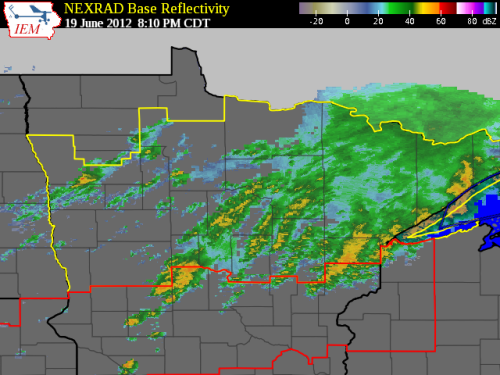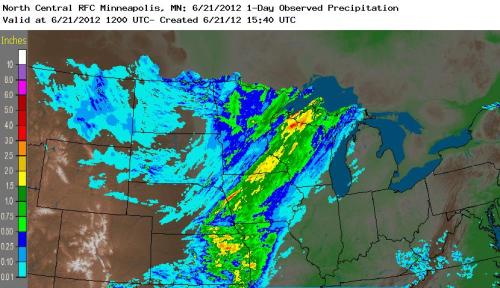On June 19th and 20th, northeast Minnesota and northwest Wisconsin were hit by a large rain storm that caused extensive flooding and property damage. This is the fourth and final post in a series where I explore geospatial technologies to integrate precipitation patterns, streamflow, imagery and reference data to better understand the impacts of the storm.
Google Earth and Keyhole Markup Language
Much of the data presented in the previous three posts are available in Keyhole Markup Language (KML). KML is named after Keyhole, Inc., developer of the Keyhole Earth Viewer, an early virtual globe. Keyhole was acquired by Google in 2004 and Google Earth evolved from the original Keyhole Earth Viewer. KML is now an open standard promoting data visualization and sharing. Google Earth has become the most popular virtual globe with over 1 billion downloads.
I used Google Earth to create an application that pulls together spatial data and animations to better understand the Duluth Solstice Storm and its impacts (click here to link to the file if you have Google Earth installed on your computer – it is a large file at 6.6 MB). Various data sources were grouped in four folders – precipitation, streamflow, imagery, and reference. The precipitation folder includes storm total precipitation for the 54 hour event and an animation of NEXRAD radar data that shows how precipitation moved over the Duluth region. The streamflow folder contains gages in the U.S Geological Survey’s National Water Information System. Clicking on individual points allows more exploration of the flow response of area streams to the storm. The imagery folder contains five MODIS images over two weeks of the sediment plumes reaching into the western arm of Lake Superior. The reference folder contains watershed boundaries for the St. Louis and Cloquet Rivers.
Together the data and animations in the four folders show how precipitation passed over the watersheds in the region, how the streams responded to the precipitation and how the receiving water body was impacted. This is a starting point for better understanding the storm. More data and animations could be added strengthen our understanding of flooding and water quality impacts.

Storm Total Precipitation and Watersheds in Google Earth

Stream Gages and Sediment Plumes in Google Earth
CUAHSI Hydrologic Information System
CUAHSI is an acronym for Consortium of Universities for the Advancement of Hydrologic Science. The Hydrologic Information System (HIS) component aims to improve accessibility and integration of the nation’s water information and develop tools to better understand hydrologic systems. Hydro Desktop is a software client for desktop computers that allows discovery and analysis of hydrologic data from the CUAHSI-HIS. Hydro Desktop allows a more technical understanding of the Duluth Solstice Storm. This movie shows Hydro Desktop in action for a site in Texas. The images below show storm total precipitation from the Solstice storm in relation to the St. Louis River watershed and streamflow on the Nemadji River near Superior, Wisconsin using Hydro Desktop.
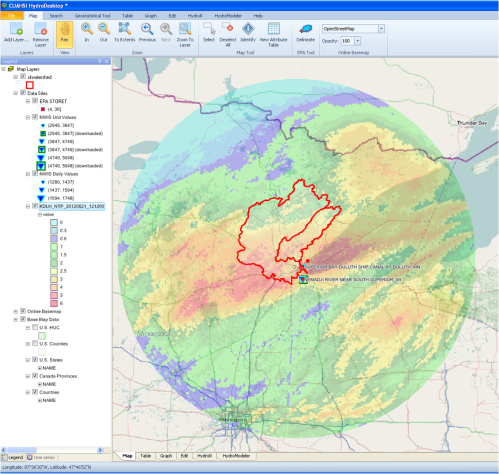
Storm Total Precipitation and the St. Louis River Watershed in CUAHSI Hydro Desktop

Nemadji River Hydrograph in the CUAHSI Hydro Desktop
Enhancing the Hydrologic Dashboard
As part of the Wisconsin Coastal Atlas project funded by UW Sea Grant, Erin Hamilton, a Masters student in Cartography and GIS at UW-Madison is enhancing the Fox-Wolf Hydrologic Dashboard using open-source JavaScript libraries such as OpenLayers for interactive mapping and HighCharts for graphing. The original dashboard was created with Adobe Flash to integrate and visualize distributed web services to support water resource management. It included the following components: (1) a map frame that includes stream gages and precipitation observations, catchment areas for stream gages, watershed boundaries and land cover; (2) time-series graphs of stream flow and precipitation data from the National Water Information System (NWIS) maintained by the U.S. Geological Survey; and, (3) a linkage between the stream flow graph and the map window that allows a user to view precipitation patterns from individual storm events in the context of gage location and catchment area and view animations of NEXRAD base reflectivity for precipitation events.
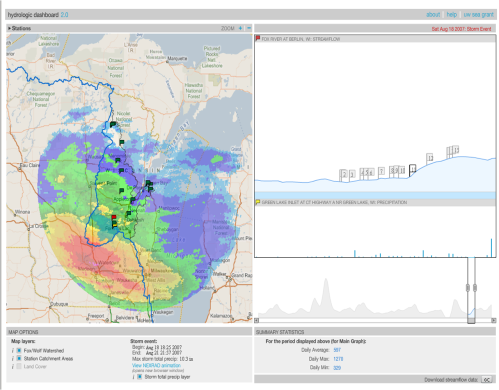
Fox Wolf Hydrologic Dashboard – Version 1
The enhanced version of the dashboard will more effectively link visualization of precipitation events, stream monitoring data, and changing land cover patterns in the watershed to satellite imagery and point observations of receiving waters to illustrate the impacts of human activities on land to coastal waters and provide the dynamic information needed to promote adaptive management of water resources. The overall concept of the enhanced dashboard was presented this March at the American Water Resources Association 2012 GIS Specialty meeting in New Orleans and Erin will present in October on the benefits of using open Javascript libraries at the North American Cartographic Information Society 2012 meeting in Portland, Oregon. A measure of success of the enhanced Fox-Wolf Hydrologic Dashboard is how transferable it is to watersheds like that of the St. Louis River.


